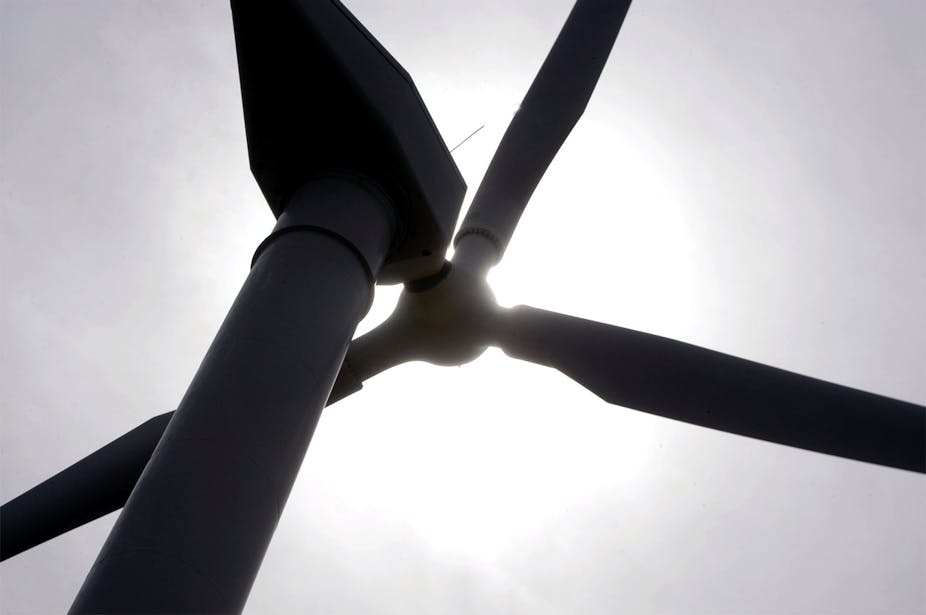Project: To develop better batteries for renewable energy
Cost: Around $1.2 million per year (for a team of eight people across several disciplines)
Timeframe: First generation technology within three years, with subsequent improvements in five to seven years
As Australia struggles to come to terms with the ever-present threat of climate change, calls for greater uptake of renewable energies are coming loud and clear. Such calls make the offer of a blank cheque – thank you very much – even more appealing.
Unfortunately, power generated from renewable sources – such as solar, wind and wave energy – is often variable and only intermittently reliable.
Consequently, the extensive use of these renewable energy sources becomes challenging, both in isolated installations where no other source of power supply is available, and also when connected to the grid.
So what can be done? How can we make renewable energy a more viable long-term, widespread prospect?
Well, to enable use of these vast resources, and to make a significant impact on reducing greenhouse emissions from electricity generation, we need efficient and reliable energy storage capabilities.
Battery technologies offer the most viable solution to this energy storage problem and will allow greater penetration of renewables into the electricity grid.
A recent report by the Science, Technology, Environment and Resources Section of the Australian Parliamentary Library concluded that:
“A key to supplanting coal and gas-powered generation will be the development of storage media able to capture intermittent energy and supply controlled output to match demand”.
And that “… higher levels of penetration of renewables in the energy sector could be constrained by the volatile nature of primary supply availability, but energy storage can address this problem.”
Reliable energy storage would be beneficial in remote or stand-alone renewable energy installations, such as in isolated communities or rural dwellings. This application is of particular importance when we consider developing regions such as Africa and India.
But at present there is a significant lack of a sufficiently economical energy storage technology.
Lithium-based technology is already too expensive and will become increasingly so as relatively-scarce lithium becomes more widely used, for large-scale use in this context.
As a result, alternative, inexpensive and safe energy storage technologies are of major significance.
Our group at Deakin University, as part of the Australian Centre of Excellence in Electromaterials Science, is addressing these energy storage problems through a left-field approach in energy storage.
Modern materials science has made it possible to bring together materials which, in principle, would allow us to produce batteries with much longer lifetimes and lower cost.
Such batteries can be based on cheap, highly-abundant metals such as zinc, sodium or magnesium.
One especially attractive system is the reversible metal air battery based on one of these abundant metals. A reversible magnesium air battery would allow a cheap, environmentally sound and safe alternative to the lithium-ion, lead-acid or high-temperature sodium batteries currently being suggested.
If I had a blank cheque I would bring together a high quality team of researchers and technical resources to enable us to develop new battery technologies.
The challenges here are threefold:
- We have to be able to do reversible electrochemistry on the magnesium (or magnesium alloy) anode material – the battery’s negative terminal . In other words, we need to be able to strip and re-deposit the metal on the anode.
- We have to develop stable and electrochemically reversible cathode materials – the battery’s positive terminal.
- We have to discover a cheap, stable electrolyte material with the desirable “transport properties” (ability to transfer electricity) for the battery.
These challenges are not insurmountable and eventually, meeting them will become all but compulsory as the world cries out for more reliable sources of renewable energy.
The sooner we get started, the better.
Are you an academic or researcher? What could be done in your discipline with a blank cheque? We want to hear from you.

